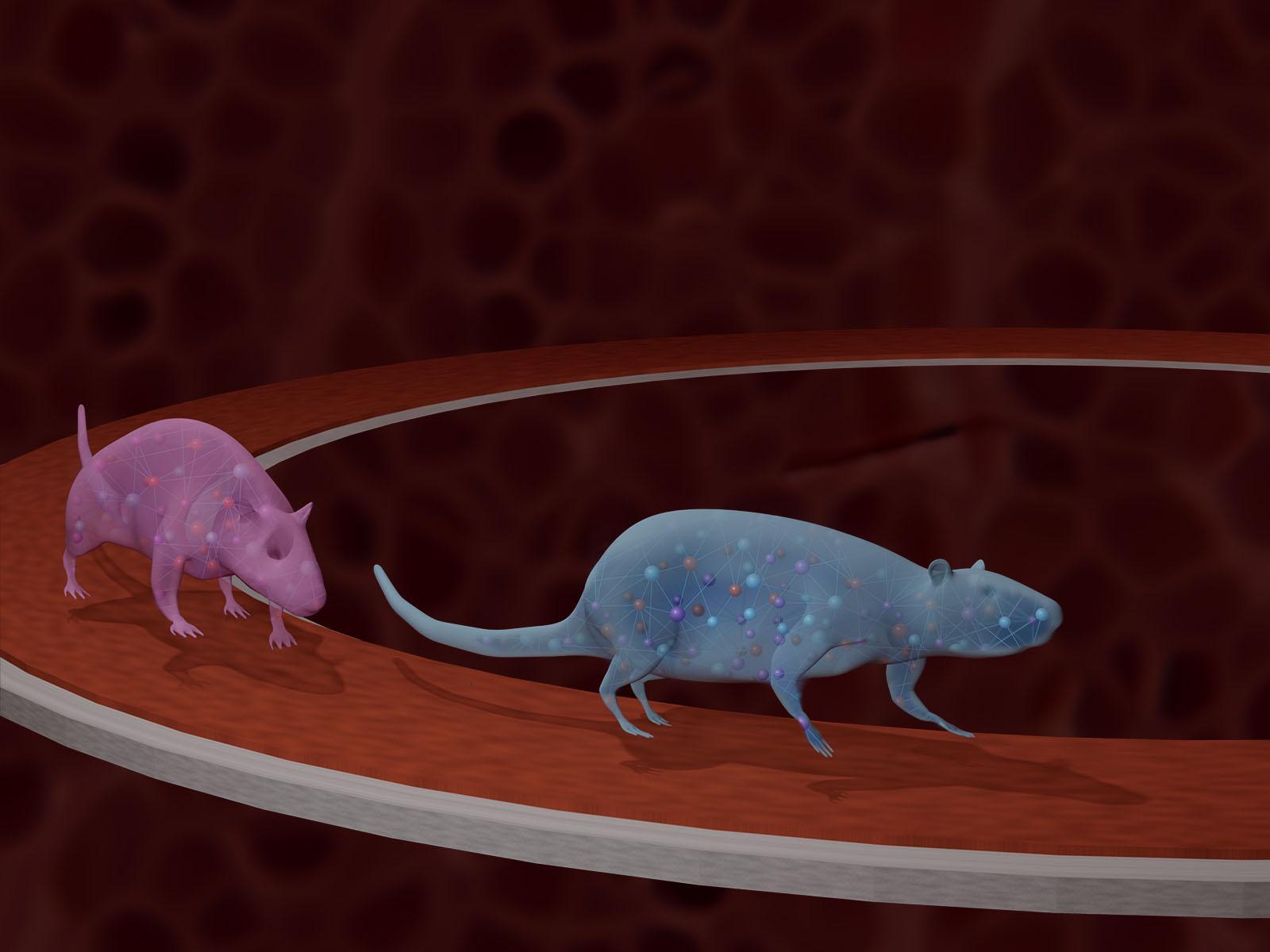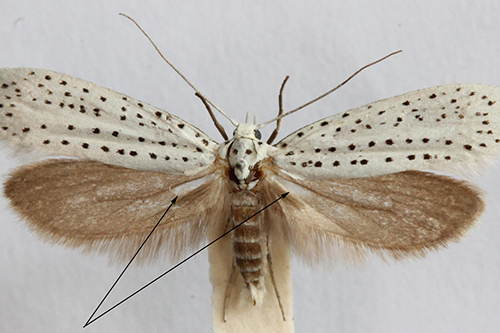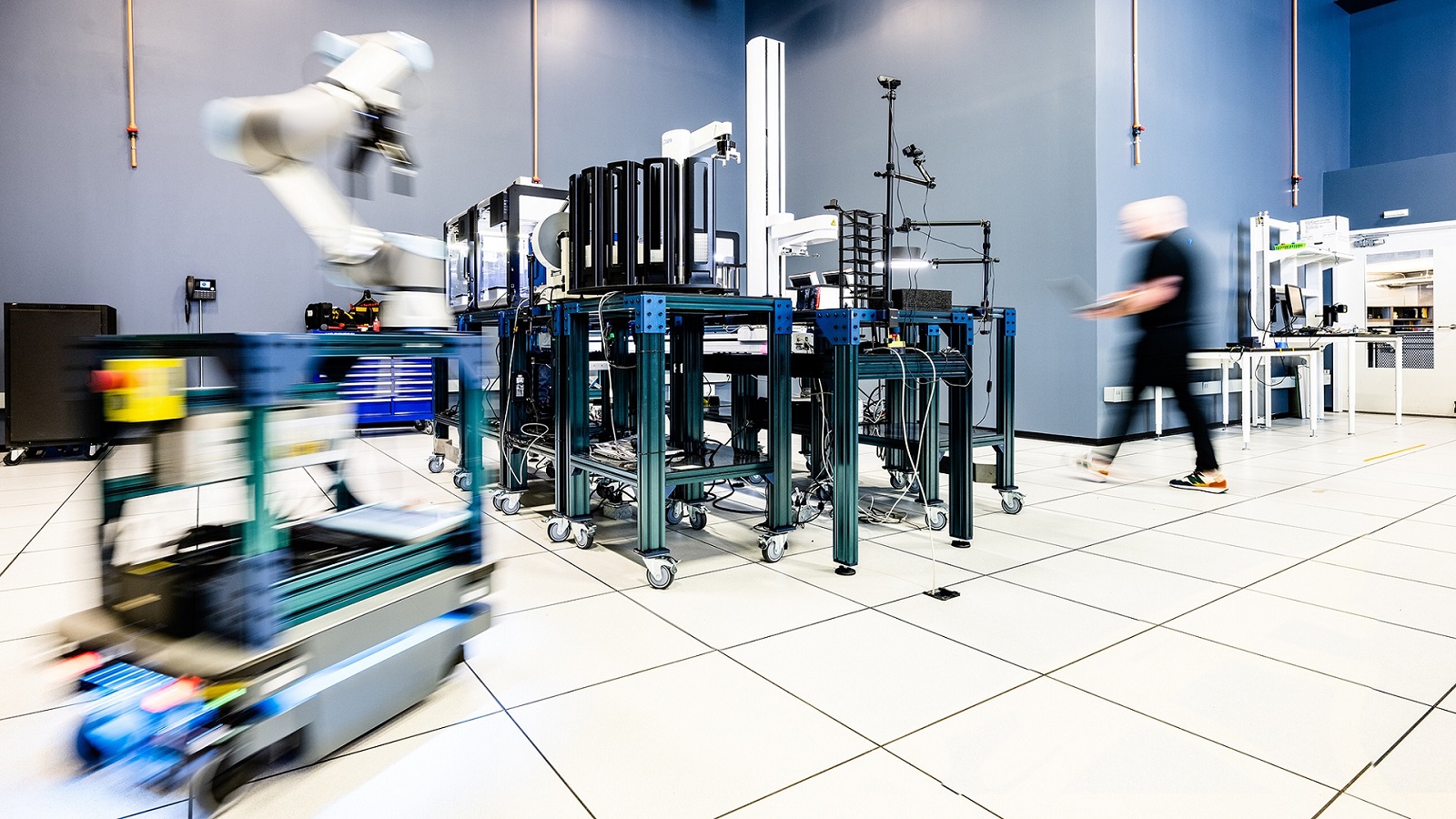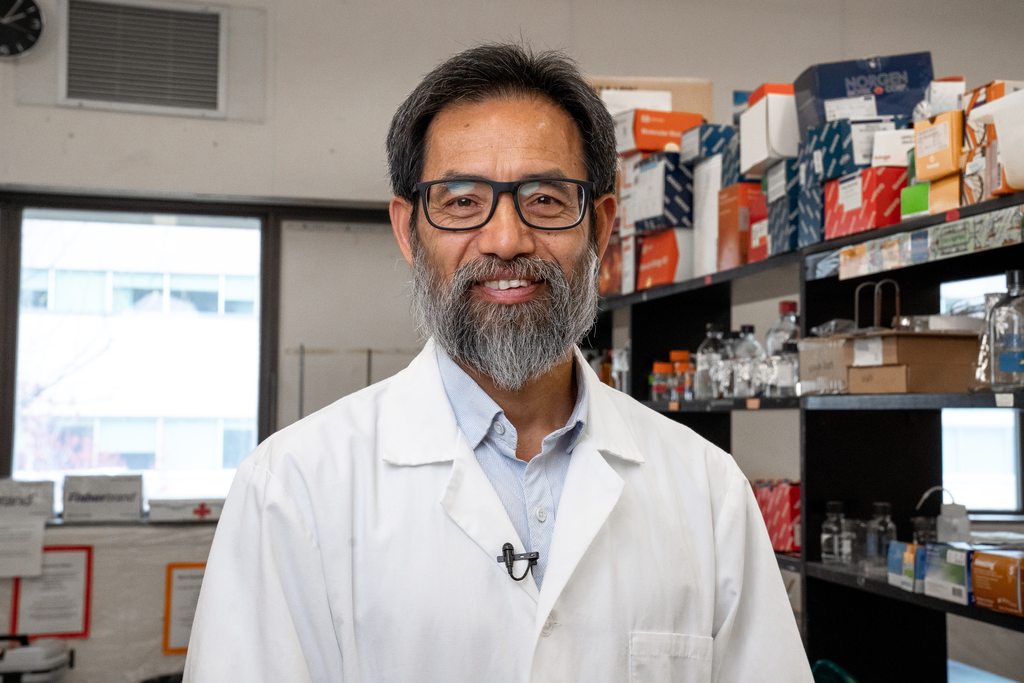New drug that disrupts two cellular targets would make it much harder for bacteria to evolve resistance
Tag: Biology
Insight into one of life’s earliest ancestors revealed in new study
An international team of researchers led by the University of Bristol has shed light on Earth’s earliest ecosystem, showing that within a few hundred million years of planetary formation, life on Earth was already flourishing.
Revising biomedical research reviews
In biomedical research involving human subjects, research ethics committees around the world have traditionally emphasized individual rights and protections for participants, including informed consent.
SHRO’s Giordano Climbs the Ranks of Top Scientists List
Sbarro Health Research Organization (SHRO) Founder and Director, the Italian American Antonio Giordano, MD, PhD, climbs in the rankings of the top scientists in the United States and around the world. This recognition puts Giordano in the company of accomplished researchers in science and medicine globally. A source of pride for Italy but also for the States.
Biotech entrepreneur donates $50 million to UC Irvine School of Biological Sciences
The University of California, Irvine has received a $50 million donation from Orange County biotech entrepreneur Charlie Dunlop for the School of Biological Sciences. Dean Frank LaFerla announced the gift before thousands of graduating students, faculty and family supporters at today’s school commencement, where Dunlop was the featured speaker.
Why some plant diseases thrive in urban environments
Something about city life seems to suit powdery mildew, a fungal disease that afflicts many plants, including leaves of garden vegetables and roadside weeds. A new study from biologists at Washington University in St. Louis finds that plants in the city of St. Louis had significantly more mildew than those in the suburbs or countryside.
Gene could unlock big wheat yields for a growing population
A study from the University of Adelaide has discovered molecular pathways regulated by a gene traditionally used to control wheat-flowering behaviour could be altered to achieve greater yields.
Researchers Identify Priority Areas That Deliver on Climate Change, Biodiversity and Health
To meet the imperative of the Kunming-Montreal Global Biodiversity Framework target, which seeks to protect at least 30 percent of the planet by 2030, researchers in an essay in PLOS Biology argue that “conservation areas need to be large enough to encompass functioning ecosystems and their associated biodiversity, and located in areas of high ecological integrity.”

Brookhaven Lab Biophysicist F. William Studier Awarded Merkin Prize in Biomedical Technology
F. William Studier, a senior biophysicist emeritus at the U.S. Department of Energy’s ‘Brookhaven National Laboratory, has won the 2024 Richard N. Merkin Prize in Biomedical Technology for his development in the 1980s of an efficient, scalable method of producing RNA and proteins in the laboratory.
Nature’s 3D printer: bristle worms form bristles piece by piece
A new interdisciplinary study led by molecular biologist Florian Raible from the Max Perutz Labs at the University of Vienna provides exciting insights into the bristles of the marine annelid worm Platynereis dumerilii. Specialized cells, so-called chaetoblasts, control the formation of the bristles. Their mode of operation is astonishingly similar to that of a technical 3D printer. The project is a collaboration with researchers from the University of Helsinki, Vienna University of Technology and Masaryk University in Brno.

First Steps Toward a Whole-Body Map of Molecular Responses to Exercise
PNNL contributes to a nationwide research consortium investigating the molecular mechanisms triggered by endurance training.
Cell Biology: Molecular Code Stimulates Pioneer Cells to Build Blood Vessels in the Body
Cardiovascular diseases, including stroke and myocardial infarction, are the world’s leading causes of mortality, accounting for over 18 million deaths a year. A team of KIT researchers has now identified a new cell type in blood vessels responsible for vascular growth.
The role of machine learning and computer vision in Imageomics
A new field promises to usher in a new era of using machine learning and computer vision to tackle small and large-scale questions about the biology of organisms around the globe.
Scientists CT scanned thousands of natural history specimens, which you can access for free
3D reconstructions of thousands specimens are now available online.
Binghamton University biologist named Fellow of American Academy of Microbiology
Binghamton University, State University of New York researcher Karin Sauer is among 65 scientists elected as Fellows of the American Academy of Microbiology this year. Fellows are elected by their peers based on their scientific achievements and original contributions to the field of microbiology.
Weedy rice gets competitive boost from its wild neighbors
Weedy rice is an agricultural pest with a global economic impact. It is an aggressive weed that outcompetes cultivated rice and causes billions of dollars in yield losses worldwide. A study from Washington University in St. Louis offers new insights into genetic changes that give weedy rice its edge over cultivated rice in tropical regions of the world.
Membrane Technology: Looking Deep into Smallest Pores
Membranes of vertically aligned carbon nanotubes (VaCNT) can be used to clean or desalinate water at high flow rate and low pressure. Recently, researchers of Karlsruhe Institute of Technology (KIT) and partners carried out steroid hormone adsorption experiments to study the interplay of forces in the small pores. They found that VaCNT of specific pore geometry and pore surface structure are suited for use as highly selective membranes. The researchers report in Nature Communications. (DOI: 10.1038/s41467-024-44883-2)
Pollinator’s death trap turns into nursery
In a group of plants that is famous for luring its pollinators into a death trap, one species offers its flowers as a nursery in exchange.

Mystery of moths’ warning sound production explained in new study
The workings of the ultrasonic warning sounds produced by the wings of a species of moth have been revealed by researchers at the University of Bristol.
RNA Scientist Receives Federal Funding to Commercialize Molecular Tool Against Alzheimer’s Disease
University at Albany scientist Scott Tenenbaum, founder of UAlbany spinoff company sxRNA Technologies, Inc. (sxRNA Tech), has received $500,000 from the National Institute on Aging, part of the National Institutes of Health, to study how aging brain cells shape the progression of Alzheimer’s disease, and advance RNA technology that could inform new therapeutics to prevent and treat Alzheimer’s and related dementias.
Media Tip: Argonne’s Advanced Photon Source to accelerate biological and environmental research
In October 2023, the Advanced Photon Source (APS), a U.S. Department of Energy (DOE) Office of Science user facility at DOE’s Argonne National Laboratory, officially launched a new initiative to expand biological and environmental research at the world leading X-ray and analysis facility.
Bats take spotlight during October’s Bat Week: Illinois expert available
URBANA, Ill. — Bats come out of the shadows during Bat Week (Oct. 24-31, 2023), an international awareness campaign that aims to educate the public about bat conservation in the week leading up to Halloween. University of Illinois Urbana-Champaign bat…
New threat to Antarctic fur seals
Antarctic fur seals that were hunted to near extinction have recovered but now face dangerous decline because of a lack of food, new research suggests. The study of fur seals, almost all of which live on the sub-Antarctic islands of…
RUDN Biologist Improved Carp Growth With Lactic Acid
RUDN University biologist and colleagues from Iran found that adding lactic acid to carp feed improves the growth and health of the fish. The authors selected the optimal concentration of the feed additive. It will help improve the quality of fish products.
These Robots Helped Understand How Insects Evolved Two Distinct Strategies of Flight
Robots built by engineers at the University of California San Diego helped achieve a major breakthrough in understanding how insect flight evolved, described in the Oct. 4, 2023 issue of the journal Nature. The study is a result of a six-year long collaboration between roboticists at UC San Diego and biophysicists at the Georgia Institute of Technology.
RUDN Biologist Proposed Cheap Way to Protect Delicious Fish from Diseases
RUDN University biologists and colleagues from Egypt and Saudi Arabia were the first to study the effect of nanoparticles of the natural polymer chitosan on the fish’s health in aquaculture. It turned out that chitosan nanogel increases the resistance to a dangerous yeast by 22%. It increases the productivity of fisheries.
RNA Scientist Available to Share Insights on 2023 Nobel Prize in Medicine
ALBANY, N.Y. (Oct. 3, 2023) — The 2023 Nobel Prize in Medicine has been awarded to scientists Katalin Karikó and Drew Weissman for laying the scientific foundation that enabled the development of the mRNA vaccine for COVID-19. The vaccine has…
New study by FSU biologist challenges old ideas about choosing mates
A Florida State University biologist has proposed a new idea about how animals choose their mates, and mathematical tests suggest that it could challenge the previous understanding into picking partners.
Metaphors for human fertilization are evolving, study shows
In a common metaphor used to describe human fertilization, sperm cells are competitors racing to penetrate a passive egg. But as critics have noted, the description is also a “fairy tale,” rooted in cultural beliefs about masculinity and femininity.
The dance of organ positioning: a tango of three proteins
In order to keep track of their environment, cells use cilia, antenna-like structures that can sense a variety of stimuli, including the flow of fluids outside the cell.
The venom spider: New genus named after Tom Hardy’s Marvel character
Tom Hardy and his Marvel character Venom have given their names to a newly discovered Australian spider. The genus Venomius and its only current species Venomius tomhardyi were described following an expedition to Tasmania.
BD² ANNOUNCES $18 MILLION IN GRANTS TO UNDERSTAND BIOLOGY OF BIPOLAR DISORDER
BD²: Breakthrough Discoveries for Thriving with Bipolar Disorder today announced its first round of Discovery Research grants, totaling $18 million.
Genomes of enigmatic tusk shells provide new insights into early Molluscan evolution
Accurate phylogenetic trees are fundamental to evolutionary and comparative biology, but the almost simultaneous emergence of major animal phyla and diverse body plans during the Cambrian Explosion poses major challenges to reconstructing deep metazoan phylogenetic relationships.
New LJI research has major implications for controlling T cell activity
According to new research in the journal Immunity, T cells have a nuclear receptor doing something very odd—but very important—to help them fight pathogens and destroy cancer cells.
Race-based variations in gut bacteria emerge by 3 months of age
Variations in the gut microbiome are linked to the incidence and mortality of diseases. A new study highlights a critical development window during which these differences emerge. The findings are based on analysis of data from 2,756 gut microbiome samples from 729 U.S. children between birth and 12 years of age.

Autonomous discovery defines the next era of science
Argonne National Laboratory is reimagining the lab spaces and scientific careers of the future by harnessing the power of robotics, artificial intelligence and machine learning in the quest for new knowledge.
Hormone alters electric fish’s signal-canceling trick
New research shows that the hormone testosterone — which naturally triggers male electric fish to elongate the electric pulses they send out during the breeding season — also alters a system in the fish’s brain that enables the fish to ignore its own electric signals.
Microalgae vs. mercury
In the search for ways to fight methylmercury pollution in global waterways, scientists at Oak Ridge National Laboratory discovered that some forms of phytoplankton are good at degrading the substance.
U.S. Department of Energy Announces $37 Million to Build Research Capacity at Historically Underrepresented Institutions
The U.S. Department of Energy (DOE) today announced $37 million in funding for 52 projects to 44 institutions to build research capacity, infrastructure, and expertise at institutions historically underrepresented in DOE’s Office of Science portfolio, including Minority Serving Institutions (MSIs) and Emerging Research Institutions (ERIs).
Department of Energy User Facility Launches Platform for Analyzing Biological and Environmental Research Data
The Department of Energy’s Environmental Molecular Sciences Laboratory (EMSL) has launched the Data Transformations Integrated Research Platform to help researchers transform their scientific data into more manageable sets of information, improve data accessibility and reproducibility, and facilitate the creation of models and visualization tools that help tell a larger story from the data.
Researchers use Argonne X-rays to find the best antibodies
Antibody therapies are only effective if the antibodies do what we want them to do. This research can help scientists determine if an antibody is likely to stick to something other than the intended target, which should lessen the amount of time wasted with overly sticky antibodies.
Shell game: Researchers find an uncommon wild bee thriving by nesting in a localized bonanza of old snail shells
Biologists at McMaster University studying the local abundance of a typically uncommon wild native bee have found a clear link between the unusual population spike and the concentration of a non-native snail in the same area.

Researchers discover drug-resistant, often deadly pathogen living in dogs’ ears, creating concern it may jump to humans
Scientists at McMaster University and India’s University of Delhi have discovered and isolated the first live culture of the drug-resistant pathogen Candida auris from an animal, specifically from the ear canals of stray dogs.
Submit proposal for research funding opportunity at EMSL, a Department of Energy scientific facility
The Environmental Molecular Sciences Laboratory (EMSL) is seeking biological and environmental science project proposals for the Fiscal Year 2024 Exploratory Research Call through 5 p.m. on Thursday, July 6.
Study reveals workings of promising Copper deficiency drug
Research at Argonne National Laboratory’s Advanced Photon Source has revealed a key mechanism behind a promising drug for copper deficiency disorders.
Study reveals potential breakthrough in grapevine disease resistance
A team of scientists – including UC Irvine’s Distinguished Professor of Ecology & Evolutionary Biology Brandon Gaut and UC Davis’ Professors of Viticulture & Enology Dario Cantù and Andy Walker – has made a significant breakthrough in the battle against a devastating disease affecting grapevines.
New method traces ancestry of hybrid plants and animals
In a recent article published in the journal Nature Communications, Binghamton University Assistant Professor of Biological Sciences Adam Session and Daniel S. Rokhsar, a professor of genetics, evolution and development at the University of California, Berkeley, outline a way to trace these genomes back to the polypoid hybrid’s parent species.
Transforming plants into allies in the fight against climate change
Nature-based solutions are an effective tool to combat climate change triggered by rising carbon emissions, whether it’s by clearing the skies with bio-based aviation fuels or boosting natural carbon sinks. At the Department of Energy’s Oak Ridge National Laboratory, scientists are leading research to transform plants into key drivers of decarbonization, from creating biomass crops for new fuels to enhancing the ability of plants to absorb and store carbon.
Pollinators are attracted to humidity, not just scent
Humidity is as important as scent in attracting pollinators to a plant, new Cornell-led research finds, advancing basic biology and opening new avenues to support agriculture.
Butterfly beginnings
Biologists from Washington University in St. Louis collaborated with a large number of butterfly and plant specialists to reconstruct the origin and global spread of butterflies. Working with researchers from dozens of countries, Michael Landis and Mariana P. Braga in Arts & Sciences helped create the world’s largest butterfly tree of life, assembled with DNA from more than 2,000 species representing all butterfly families.